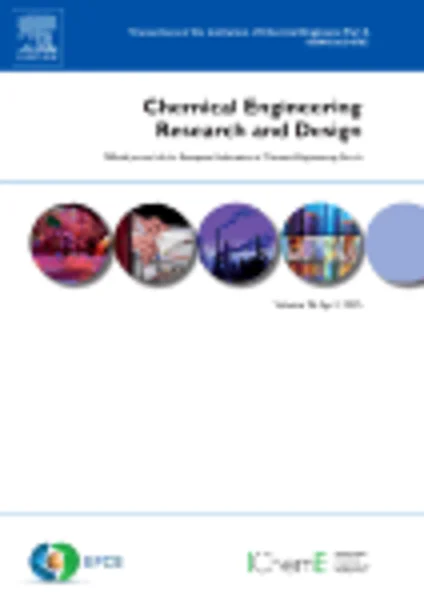-
optimization of aqueous p-aminophenol degradation by external-loop airlift sonophotoreactor using response surface methodology
جزئیات بیشتر مقاله- تاریخ ارائه: 1392/07/24
- تاریخ انتشار در تی پی بین: 1392/07/24
- تعداد بازدید: 890
- تعداد پرسش و پاسخ ها: 0
- شماره تماس دبیرخانه رویداد: -
the combination of sonolysis and photolysis in the presence of hydrogen peroxide (h2o2) in a 7-l external-loop airlift sonophotoreactor was used to treat the aqueous solution of p-aminophenol. the central composite design (ccd) and response surface methodology (rsm) were employed to evaluate the interaction effects of the initial h2o2 concentration (x1 = 100–900 mg/l), the ultrasonic power (x2 = 25–65 w), the air flow rate (x3 = 1–5 l/min), and the initial concentration of p-aminophenol (x4 = 10–50 mg/l) on the p-aminophenol degradation and total organic carbon (toc) reduction efficiencies as well as to optimize operating conditions. the coefficients of determination (r2) and adjusted-r2 obtained from the analysis of variance (anova) were 0.9900 and 0.9812 for the p-aminophenol degradation; and 0.9742 and 0.9516 for the toc removal, respectively, ensuring a satisfactory adjustment of the quadratic regression model with experimental results. the linear, square, and interaction effects of x1, x2, x3, and x4 were also calculated. genetic algorithm optimization was employed to maximize the mineralization efficiency. 79% toc reduction efficiency after 90 min and 86.5% p-aminophenol removal efficiency after 30 min were achieved under recirculating batch mode at operating conditions of x1 = 740 mg/l, x2 = 65 w, x3 = 5 l/min, and x4 = 24 mg/l.
مقالات جدیدترین رویدادها
-
استفاده از تحلیل اهمیت-عملکرد در ارائه الگوی مدیریت خلاقیت سازمانی و ارائه راهکار جهت بهبود
-
بررسی تاثیر ارزش وجوه نقد مازاد بر ساختار سرمایه شرکت های پذیرفته شده در بورس اوراق بهادار تهران
-
بررسی تأثیر سطح افشای ریسک بر قرارداد بدهی شرکت های پذیرفته شده در بورس اوراق بهادار تهران
-
بررسی تأثیر رتبه بندی اعتباری مبتنی بر مدل امتیاز بازار نوظهور بر نقد شوندگی سهام با تأکید بر خصوصی سازی شرکت ها
-
تأثیر آمیخته بازاریابی پوشاک ایرانی بر تصویر ذهنی مشتری پوشاک ایرانی (هاکوپیان)
-
پیش بینی شدت نارسایی قلبی به کمک رادیوگرافی قفسه صدری نمای رخ در بیماران بستری در بخش قلب بیمارستان بوعلی اردبیل
-
تغییرسازمانی
-
تشخیص و طبقه بندی سرطان رحم با استفاده از روش ترکیبی برش گراف و بخش بندی رنگ
-
a tableau based decision procedure for an expressive fragment of hybrid logic with binders, converse and global modalities
-
the archaeology of tula, hidalgo, mexico
مقالات جدیدترین ژورنال ها
-
مدیریت و بررسی افسردگی دانش آموزان دختر مقطع متوسطه دوم در دروان کرونا در شهرستان دزفول
-
مدیریت و بررسی خرد سیاسی در اندیشه ی فردوسی در ادب ایران
-
واکاوی و مدیریت توصیفی قلمدان(جاکلیدی)ضریح در موزه آستان قدس رضوی
-
بررسی تاثیر خلاقیت، دانش و انگیزه کارکنان بر پیشنهادات نوآورانه کارکنان ( مورد مطالعه: هتل های 3 و 4 ستاره استان کرمان)
-
بررسی تاثیر کیفیت سیستم های اطلاعاتی بر تصمیم گیری موفق در شرکتهای تولیدی استان اصفهان (مورد مطالعه: مدیران شرکتهای تولیدی استان اصفهان)
-
بررسی نقش رهبری تحول گرا بر خلاقیت سازمانی با توجه به نقش میانجی حمایت سازمانی درک شده (مورد مطالعه، شرکت ایران خودرو)
-
آشنایی با شاخصه ها و ویژگی های تعلیم و تربیت اسلامی و بهره گیری از آن ها برای آموزش کودکان دبستانی
-
تأثیر جریان نقد آزاد مازاد به واسطه کیفیت حسابرسی بر مدیریت سود شرکت های پذیرفته شده در بورس اوراق بهادار
-
برقراری امنیت کاربران بانکی بوسیله احراز هویت بیومتریک اثر انگشت توسط رمزنگاری جریان
-
بررسی پیشنهاد « ادبیات کاربردی » پی یر بَیار و ایده « استلزام » شوشانا فلمن از منظر ژک لکان




سوال خود را در مورد این مقاله مطرح نمایید :